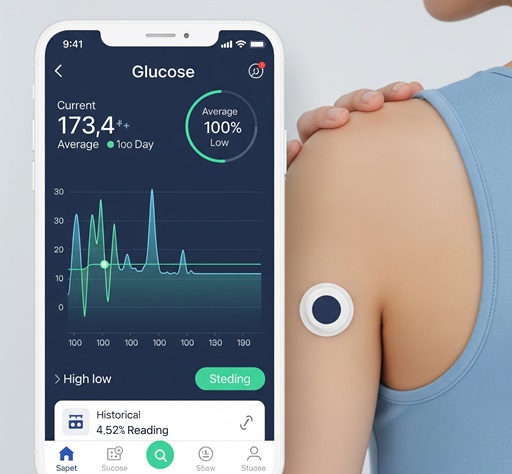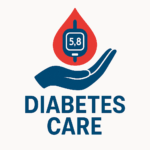Diabetes Monitoring
Continuous Glucose Monitoring (CGM) Comparison
Real Time
Automated Tracking
Share Data

Alerts
Trends
Prediction
CGM Sensors
Major Market Players and Products
The CGM market is highly concentrated, with Abbott and Dexcom holding the largest market share, followed by Medtronic and Senseonics.
Abbott:
FreeStyle Libre systems: Known for their affordability and user friendliness. The FreeStyle Libre 3 plus, the latest model, is a real-time CGM that sends minute-by-minute glucose readings to a smartphone app, eliminating the need to scan the sensor. The sensor is also smaller than previous versions and can be worn for up to 15 days.
Abbott Lingo, an over-the-counter (OTC) model, offers a 14 day wear time and is intended to be a wellness device without the real-time alerts.
Dexcom:
Dexcom G7: A real-time CGM with an all-in-one sensor and transmitter, offering a smaller size and a faster warm-up time of 30 minutes. The sensor can be worn for 10 days with a 12 hour grace period. It is approved for people as young as 2 years old and is compatible with certain automated insulin delivery (AID) systems.
- Dexcom Stelo: An over-the-counter biosensor for adults with Type 2 diabetes who are not on insulin. It provides a 15 day wear time and offers insights into how lifestyle factors affect glucose levels but does not include real-time alerts for high or low glucose.
- Medtronic:
Guardian Connect System: A CGM that provides real-time glucose readings and can also send predictive alerts, notifying users of potential highs or lows before they happen. Medtronic also has a range of integrated systems like the MiniMed 770G and 780G, which combine a CGM with an insulin pump for a closed loop system.
Senseonics:
Eversense E3: This is the only CGM with an implantable sensor, which is professionally placed under the skin and can be worn for up to 180 days (6 months). The system includes a smart transmitter worn on the body that is removable and rechargeable.
Affordability and OTC Access
Recent advances have made CGMs more financially and logistically accessible:
-
Dexcom Stelo and Abbott Lingo are now sold without a prescription, reducing barriers for early intervention and self care.
-
Subscription models and one time kits allow users to choose affordability over long term medical device contracts.
-
Retail pricing has dropped significantly for wellness focused devices, with some plans starting at $49.
Challenges and Limitations
While CGMs offer clear benefits, limitations exist:
OTC models lack alerts, making them less suitable for insulin users.
Sensor costs can still be prohibitive for uninsured populations.
App literacy and digital access remain barriers for some older adults or underserved users.
CGM Product Comparison
*Note: Products are continuously being enhanced and improved. Comparison date: June 2025)
| Product | Manufacturer | Wear Time | Prescription Required | Target Users | Alerts/Alarms | App Integration | Avg. Retail Cost (USD) |
| Dexcom G7 | Dexcom | 10 days | Yes | Type 1 & Type 2 diabetes (including insulin users) |  Yes Yes |  Yes Yes | ~$200/month, less with insurance / coupons |
| FreeStyle Libre 3 Plus | Abbott | 15 days | Yes | Type 1 & Type 2 diabetes |  Yes Yes |  Yes Yes | ~$200/month, less with insurance / coupons |
| Dexcom Stelo (OTC) | Dexcom | 15 days |  No No | Adults with Type 2 diabetes not on insulin |  No No |  Yes Yes | $89 – $99/month for 2 sensors |
| Abbott Lingo (OTC) | Abbott | 14 days |  No No | Metabolic wellness (non-diabetics, prediabetes) |  No No |  Yes Yes | $49 (1 sensor) or $89 (2 sensors) |

